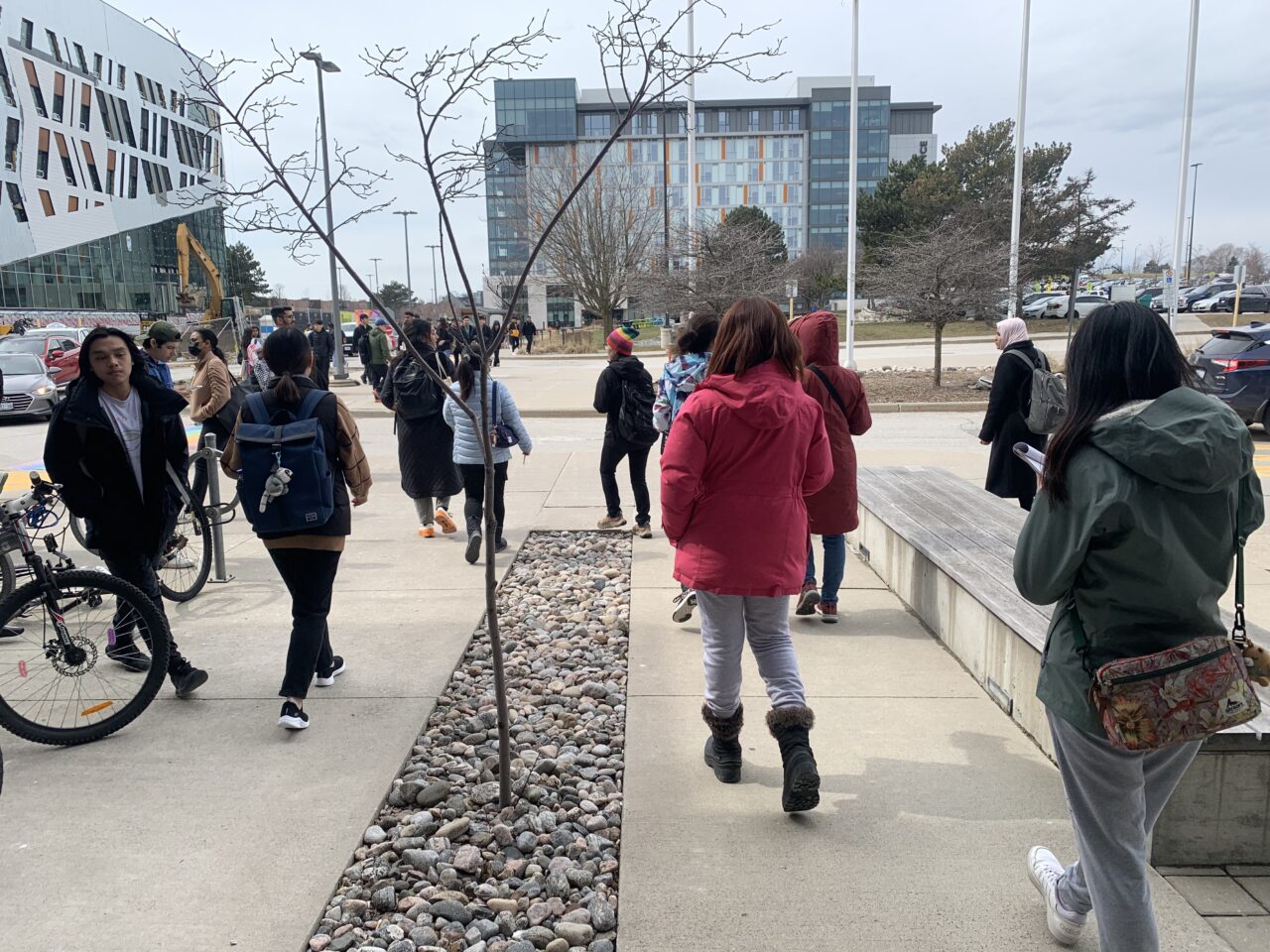This spring, TCAT partnered with Urban Minds on a project to understand how students and faculty travel to and from Progress Campus, the flagship campus of Centennial College. The goal of this project was to identify opportunities for encouraging more sustainable transportation options on campus, including walking, biking, taking transit, and carpooling. Progress Campus is, in many ways, your prototypical suburban post-secondary campus, a 200-acre parcel of land surrounded by the 401 highway and wide, high-speed arterial roads designed for cars, not active transportation.
As part of the project, we engaged more than 1,000 members of the campus community about the barriers they face in walking, riding, taking public transit, and carpooling on campus. We heard many of the things you might expect, such as a lack of safe walking and biking infrastructure and unreliable, unaffordable public transit connections. Things that are outside the jurisdiction of a college or university to influence that require buy-in, resources, and planning from local municipalities. However, we heard so much more than that. The engagement process identified so many things the college can do to influence modal choice, like removing the social and cultural barriers to sustainable mobility that are often overlooked in conversations about transportation modal shift.
For example, when conducting a walk audit of the campus with students, the need for shade in the summer, warmth in the winter, and places to sit, socialize and feel welcome on campus streets and public spaces were routinely flagged as a barrier to choosing active modes of travel on campus. In particular, the waiting area for TTC and GO buses on campus was identified as a hostile space with insufficient seating, little weather protection, and not much to engage the mind when waiting for the bus to arrive. The college may be unable to increase bus service, but they can control how comfortable and enjoyable the experience of waiting for the bus is, which, in turn, can influence how likely students are to take transit to class in the first place.

In conversations with students residing on campus, most of whom were recent newcomers to Canada, we encountered concerns about leaving their bicycles outside overnight, a factor dissuading them from cycling around campus. This came as a surprise to the college, as the student residence, in fact, has a secure and accessible bike parking room in the building. Clearly, no one had thought to tell the students about it. We also heard from newcomers that before they moved to Canada, all they heard was how awful Canadian winters are and how impossible it is to walk anywhere when it’s cold (i.e. 11 months of the year). As a result, they didn’t even consider walking as an option to local amenities like nearby grocery stores, even though they are within a ten-minute walk, a walkable distance on all but the coldest of winter days. Addressing these knowledge gaps and proactively working with newcomer students to dispel myths about Canadian winters is absolutely within the college’s control. Students are provided information on how to pay for a monthly campus parking pass, so why not about sustainable travel as well?
Speaking of parking, more than 10 acres or 20% of all land on Progress Campus is dedicated to parking spots for cars, a massive amount of valuable real estate. Furthermore, the cost of a monthly parking pass for on-campus parking was much more affordable than the cost of a monthly public transit pass. By providing abundant and cheap parking, the college is incentivizing driving as a mode of transport. Parking lots are also expensive to maintain, act as heat sinks, and accumulate stormwater runoff. The college can’t control the cost of a public transit fare, but they can control how much they incentivize driving through their parking policies and practices. By reducing the amount of parking available on campus and increasing the cost of private vehicle storage, not only can they meaningfully disincentivize driving but also free up more critical spaces for greenspace, seating, traffic calming, and an enhanced public realm.
The takeaways from this project really highlight how much of an impact institutions like colleges, hospitals and business centres can have in reducing barriers to sustainable transportation options, even if they can’t build new sidewalks or fund more frequent public transit. They don’t need to wait for municipalities to get their acts together to take meaningful steps to increase the viability of walking, riding, and taking transit.
For more information on the project, visit https://www.tcat.ca/centennial-commutes-report-is-now-available/
By David Simor, TCAT Director